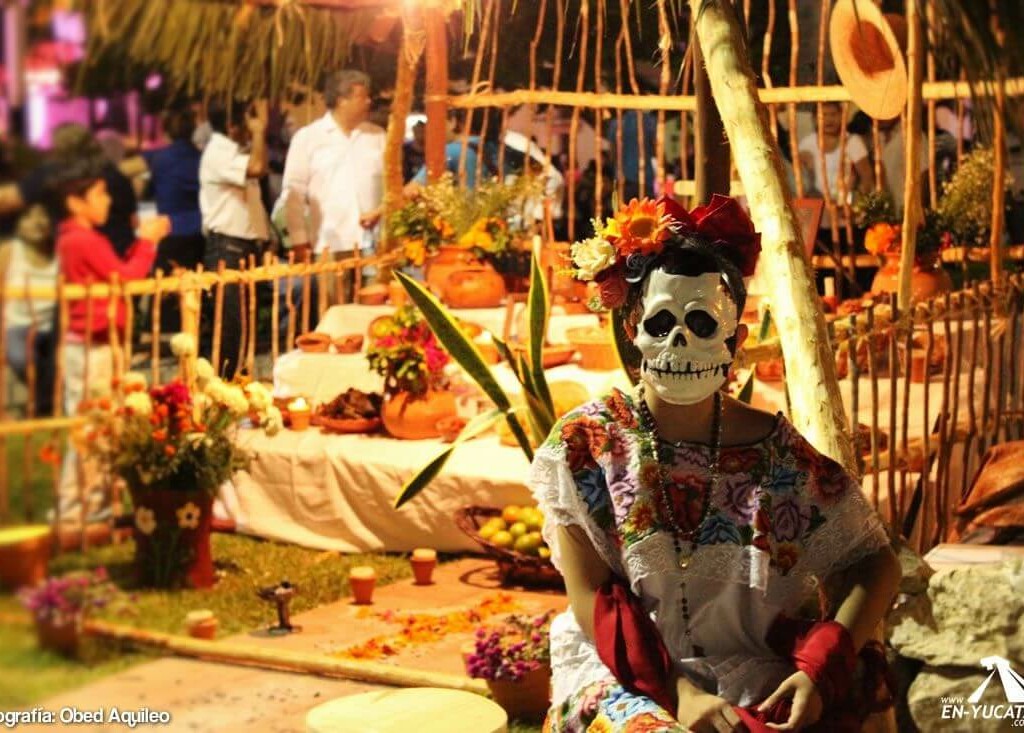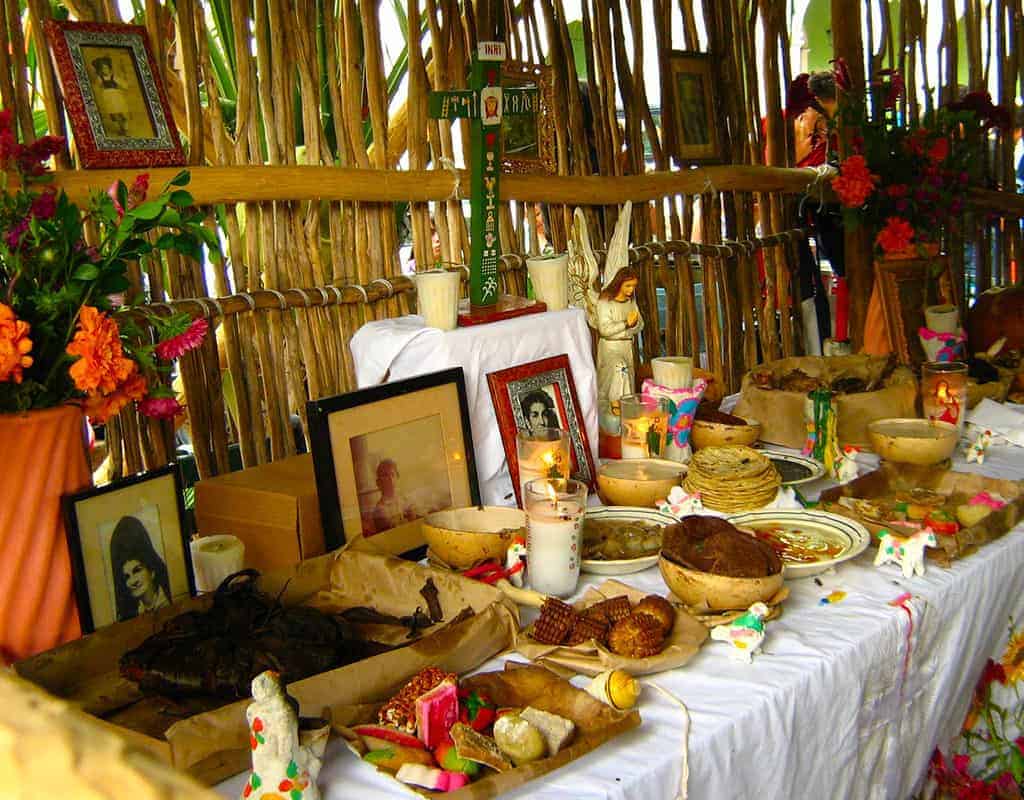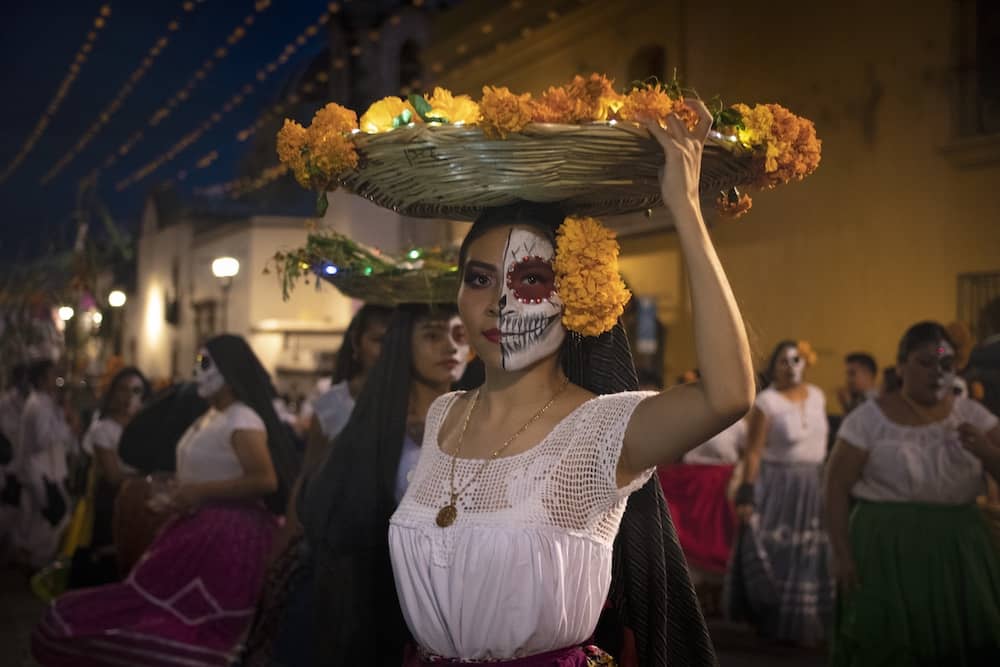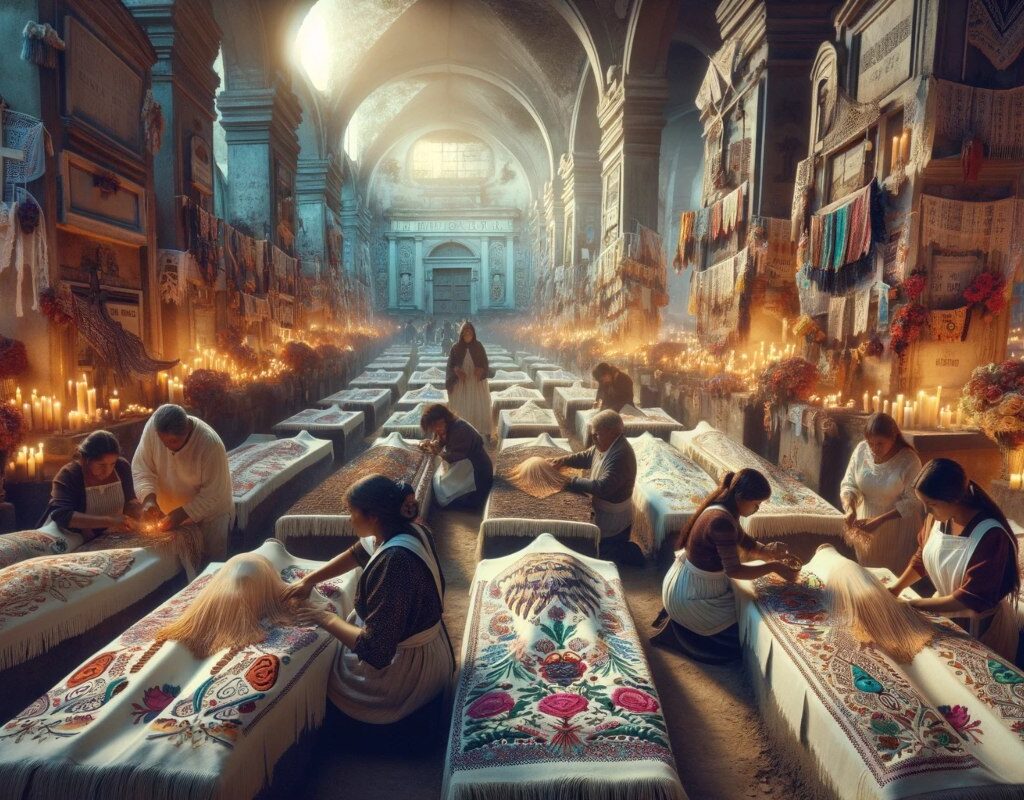U Hanal Palal, or the dead children, is honored on October 31. U Hanal Nucuch, also known as the Day of the Dead Adults, is celebrated on November 1. On November 2, also known as U Hanal Pixancoob or Misa de Pixán, a mass is held in remembrance of the deceased.
Hanal Pixan — Day of the Dead in Mexico
Mexicans have a tradition of venerating their deceased loved ones.
Hanal Pixan is a custom that dates back to before the arrival of the Spaniards, as much as the existence of Palenque, Montealban, or Jaina, a Mayan necropolis in Campeche.
According to tradition, the souls of the departed wander the earth from October 31 to November 2 to experience once a year the comforts and pleasures they enjoyed during their earthly life.
Hanal Pixan
When it comes to food, Hanal Pixan is a feast full of flavor. The best dishes are prepared in abundant quantities so that all souls can partake of earthly pleasures.
Proof of this is Mucbipollo, which is essentially a tamale or corn cake filled with chicken, sauces, broths and various spices and cooked in a hole underground and covered with banana leaves and sisal. Its name derives from the Mayan word pib, which means buried.
This food is placed mostly or entirely on the altars so that the souls can feast on it. According to this belief, the food provided would have lost its flavor and nutrients the next day.
According to the ancient Mexicans, the offering could be a sacrifice, a gift, or a tribute. The world was seen vertically by the pre-Hispanic Maya, who divided it into two sides: one upper and one lower, each with its heaven, paradise and underworld.
The ancient Maya
In the courtyards of their homes, the ancient Maya buried their dead.
They built a corral about two meters high to keep their bodies along with clay objects, metals, necklaces made with snail beads or seashells, plates and clay pots painted turquoise blue because they believed that the dead could harm them if they were not constantly worshipped.
In the Jaina culture, the deceased was shrouded with mats or cloth, or their remains were placed in a vessel.
The Yucatec Maya of colonial times practiced the custom of harnero, which consisted of placing the bones of the deceased, as long as they were dry, in a designated area of the cemetery.
This practice seems to have begun because digging in the hard soil of the peninsula was a challenge and forced the reuse of graves.
In some cases, the skull of the deceased was sun-bleached and the name of the deceased was painted on the forehead as a way of honoring him. John Lloyd Stephens observed this tradition in 1842.
The Maya of Yucatán believed that if a person died on a Hanal Pixan day, his or her soul was responsible for opening the doors of the underworld so that other souls could pass through.
In some places, when a person died, the corpse was bathed and the water was used to prepare the food that would be served to those attending the wake. It was thought that by doing this, the sins of the deceased would be distributed among the people, easing the burden on her soul.
Water is also traditionally poured over the body before it leaves the house to prevent it from being taken to someone else. A bucket of clean water is also poured on the door of the house when the coffin comes out to atone for the sins of the deceased.
Hanal Pixan Dates
Babies are given a black or red string around their wrists during Hanal Pixán because it is believed that if they are not marked, the deceased can take them away.
To avoid being confused with the souls that occasionally manifest as children, the little ones are given colored ribbons to wear around their ankles.
A different version states that they assume the role of carriers of the food brought by the old souls. Another interpretation holds that those who passed away on these days are not yet entitled to return to the earthly plane and must remain in purgatory to care for and receive those who enter it.
Since it is thought that they may frighten the souls with gunshots or sew their skin, no hunting or sewing is done on these days.
Homes should always be tidy and free of unfinished tasks
The custom is to keep homes tidy and free of any unfinished tasks on the days of the dead because it is thought that if something is left undone, the spirits will come to finish it, which would be disrespectful to them.
Mayans had the tradition of burying the dead in their courtyard, where they would build a corral about two meters high and place the body, along with clay utensils, metals, shell or conch bead necklaces, plates and clay pots painted turquoise blue.
In Jainism, the deceased were shrouded with mats or cloth, or their remains were placed in a vessel.
Although all pre-Hispanic religions practiced by the inhabitants of Mesoamerica were classified as pagan, today our traditions and customs are respected.
The families present an altar with their offerings
On this day, families prepare the foods and beverages that their deceased loved the most and offer them on an altar created especially to venerate them.
Due to the importance of the Day of the Dead in the daily life of Mexico’s indigenous communities about the various aspects and perceptions of death, UNESCO designated it an Intangible Cultural Heritage of Humanity in 2003.




